
When our eight-year-old Lily was diagnosed with Type 1 Diabetes (T1D) a little over a year ago, I grieved the potential losses to her freedom, such as her being able to go on a month-long backpacking trip for fear her insulin might spoil.
And then at a weekend camping trip with Diabetes Youth Families (DYF), I met outdoor adventurers, Patrick Mertes and Michael Shelver, who proceeded to blast the lid off presumptions about what people with Type 1 Diabetes can and cannot do.
In the past summer, Patrick and Michael launched their ambitious Project 50 in 50, which required them to scale the highest peak in each of the 50 states of the U.S. within 50 days, and they nailed it, sending the message that anything is possible with T1D.
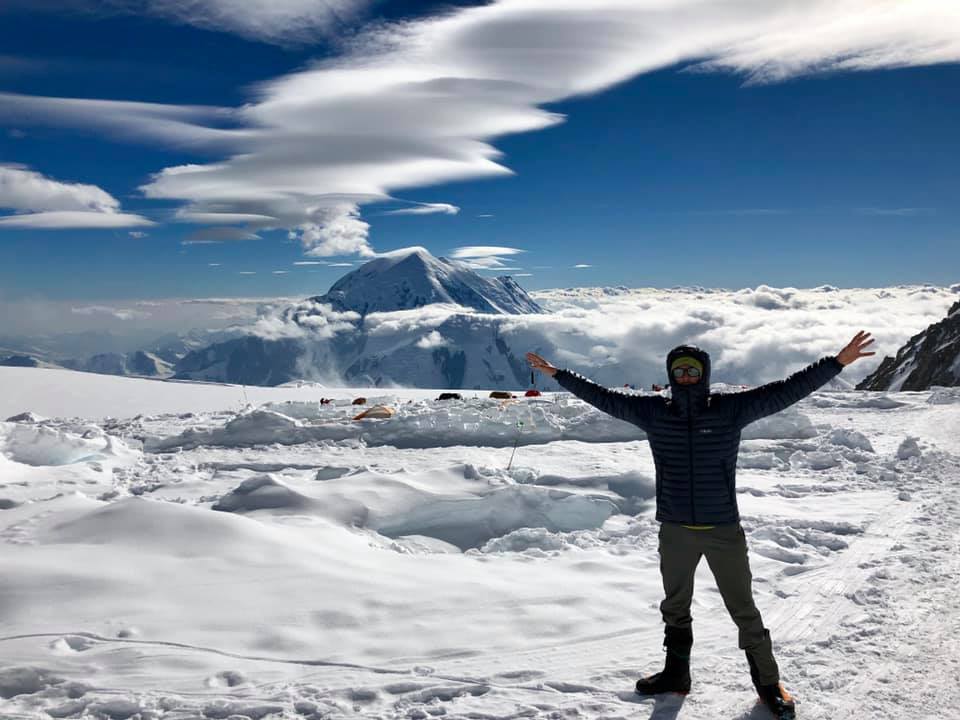
“We found out that only about 274 people had done this and most took their whole lives to do it. Only a handful did it in a couple of months and none of them did it with T1D,” Patrick said about the inspiration for this adventure.
It meant the two longtime buddies road-tripped over 16,000 miles and hiked, ran, or skied over 315 miles, sometimes under extreme conditions, all in less than two months while also managing the highs and lows of T1D.
To understand the added challenge T1D presents, let me explain. Type 1 Diabetes is a genetic, auto-immune condition in which the immune system obliterates the insulin-making cells in the pancreas, leaving a person’s body unable to move sugar from their blood to their cells for energy. To live, the person is dependent on daily, injectable insulin for the rest of their life (until the cure comes!). Unlike with Type 2 diabetics, who represent 95% of the diabetic population, no amount of exercise or dieting will enable a Type 1 diabetic to totally ditch their insulin.
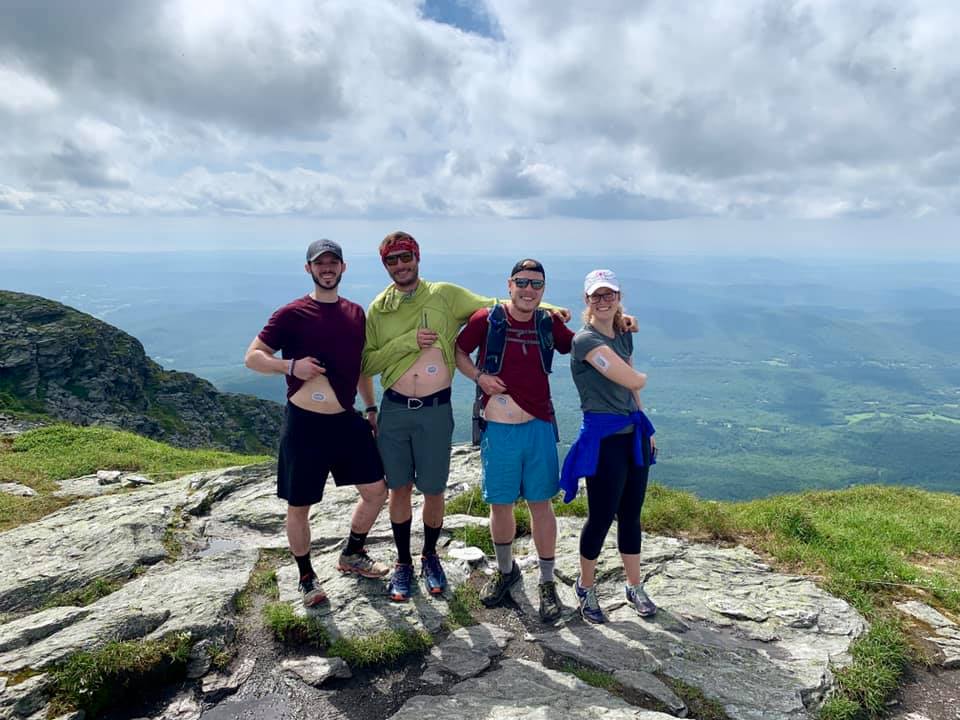
Because of this, T1Ds have to manage their blood sugar 24/7, and this is no easy feat. Insulin and exercise generally bring blood sugar down, and food and stress bring it up, but moods, growth hormones, and other factors also have an impact in ways that can be unique to each person.
With the extreme exercise, I assumed Patrick and Michael’s insulin needs decreased, and their need for sugary snacks to fight off the sugar lows increased. Patrick explained, “Yes, but altitude raises cortisol levels which raises blood sugar, so we needed more normal amounts of insulin in those situations.”
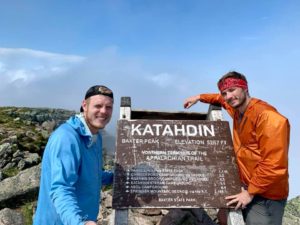
Another factor: insulin needs to be kept within a temperature range, outside of which it goes bad. “We needed to know where the nearest pharmacies were in all the locations, so that we could replace our insulin if needed,” Patrick said.
In freezing temperatures, which got down to –25° F on Denali in Alaska, they kept their insulin warm by placing vials in a sock and wearing it close to their body.
Makes the hairs on the neck of a mother like me stand up. I know the danger inherit with insulin going bad. It’s life-threatening. Their backup plan: “We had a satellite phone and a doctor on call.”
Yet Patrick said, “Diabetes was the least of our worries.”
The Adventure
Michael and Patrick made the strategic decision to climb Denali in Alaska first, counting their summit day as day 1 on their 50-day challenge. At, 20,310 feet, Denali is the highest peak in North America and a challenging technical climb.
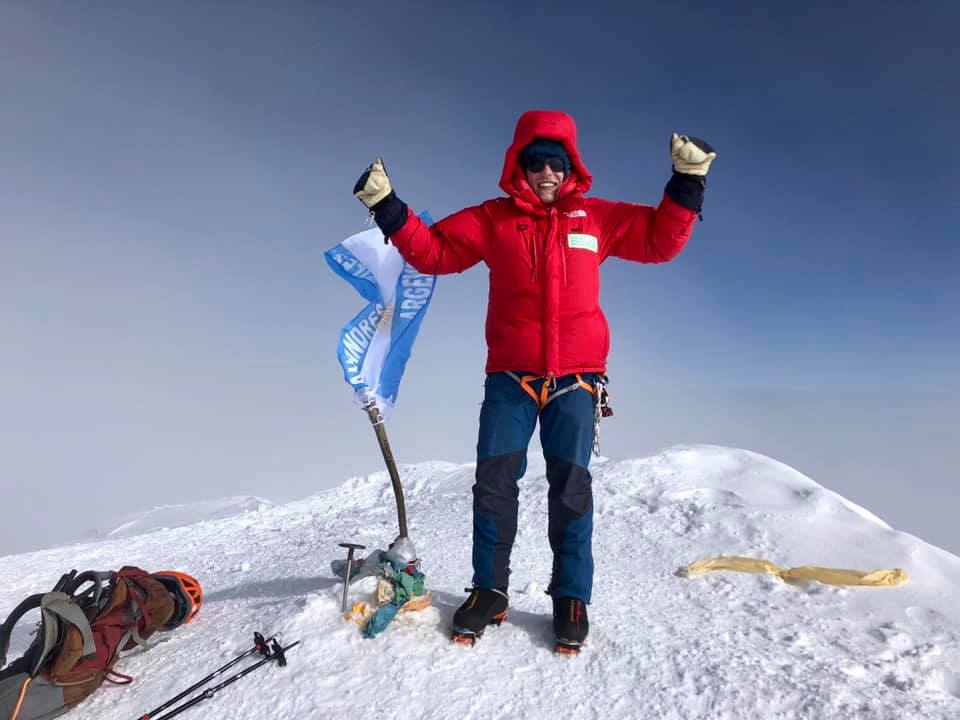
According to their website, the pair spent a short nine days climbing with each one carrying over 120 lbs. of gear, fuel, food, and diabetes supplies in temperatures as low as -25° F degrees. They reached the top of North America at 6:16 p.m. Alaska time on June 29th.
Unfortunately, on the decent, Patrick got pulmonary edema. He could hardly breath, and he was vomiting and having a hard time keeping his blood sugar up. Michael called for a rescue helicopter, and eventually got one.
They wrote about the experience: “Did we have perfect blood sugars during the climb? Far from it—dozens of lows, several short episodes with ketones, one mini dose of glucagon administered, loads of basal adjustments, and a decent amount of time factoring in for AMS (acute mountain sickness). Did diabetes stand in our way? It was never an option.”
From there, they flew to Hawaii to summit Mauna Kea, and then on to Illinois, with the highest point being just 1,235 feet on a grassy area. It’s also on private land, so Michael and Patrick had to get permission. Considering their mission, the land owner, Jean, welcomed them.

Other highlights include “summiting” Campbell Hill, Ohio, which is located on a basketball court. The pair donned full ice climbing gear with rope to “scale” this one, making a hilarious video on it. Florida’s high point is Britton Hill at 345 feet, making it the lowest of the highest points in the U.S.
Driving them to many of these places in record time was Patrick’s dad, aka, Croc Man. They practically lived in their sprinter van.
All seemed smooth until they reached peak #36, 21 days in. Granite Peak in Montana, at 12,807 feet, was considered the most technically difficult after Denali. The pair had to climb in the dark, but successfully summited at 1:30 a.m. after putting in 28 miles and ascending 9,000 feet. They spent the night on the mountain until sunrise. On the way down, while descending a snow field with their ice axes, Patrick slipped and slid about 100 feet, crashing into a rock field. Michael then slipped and tried to self-arrest with his ax, but it flew from his hands. After sliding about 400 feet, he crashed hard into a rock field. Michael was certain he had broken his legs. An SOS was sent and a rescue helicopter arrived two hours later. (Turned out the lead paramedic had T1D.)
After that, Michael flew to Colorado to recover while fellow T1D’er Kevin Clark took his place for a few of the more technical peaks until Michael was able to hop back on the project. Astonishingly, it turned out Michael hadn’t broken his legs, although he sustained other serious injuries.
They finished their adventure with Guadalupe Peak, Texas on Day 49. You can read details of their adventures on their website or on Instagram.
Creating Community Along the Way
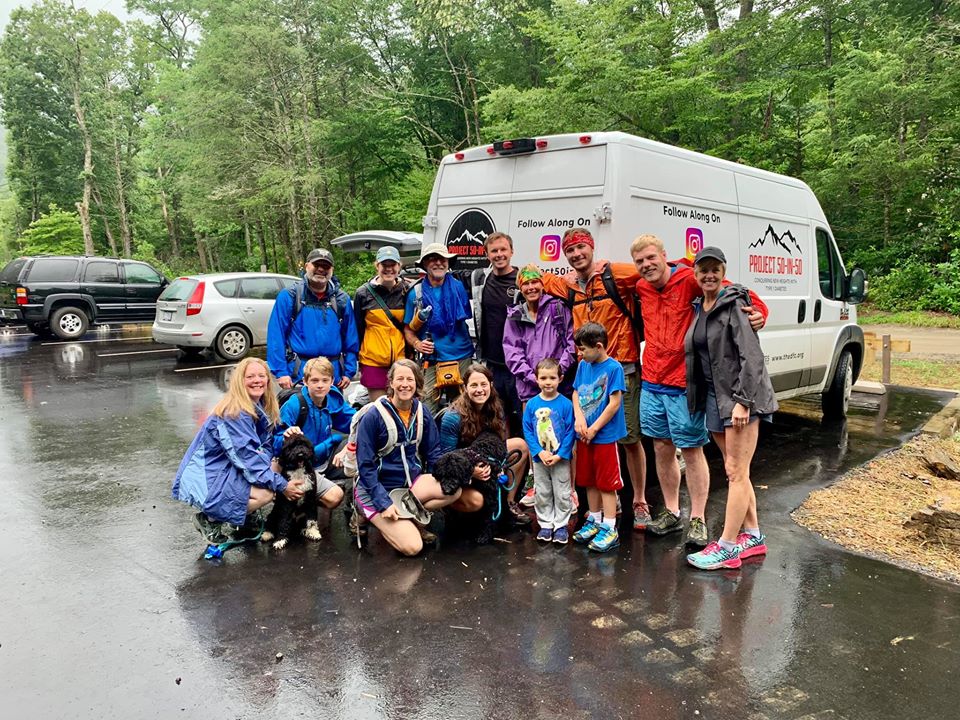
Throughout, local T1D communities came out either to cheer Michael and Patrick on or to join them on their hike or climb to the summit. It was part of their mission all along: to create a movement of getting T1Ds outside, to build community, and to fundraise for organizations that get T1Ds outdoors. “The project will prove that with proper planning, anything is possible with Type 1 Diabetes.”
Patrick and Michael also managed to attract some pretty awesome sponsors, including Dexcom, a leading maker of Continuous Glucose Monitors (CGM).
Lessons Learned
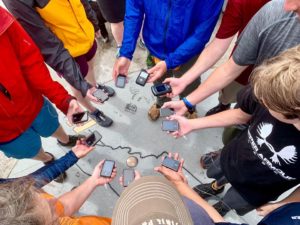
Patrick admitted that diabetic technology is a game changer. “We could have done it without, but it’s so much easier with,” he said. Like our daughter, both Michael and Patrick use insulin pumps that make the need for syringes rare, and CGMs, which practically eliminate the need for finger pokes to check blood sugar levels.
But there were bigger lessons. “If you embody this T1D as a curse, it will be,” Patrick warned. But there’s another way to see it. “Stop saying I can’t do this or your child can’t do that because I or he or she has T1D …Yes, there were days we wanted to give up. …[But] we have the power inside us to navigate these challenges. The sky is the limit.”
They gave hope to kids like my daughter, so now when I tell her she can do anything she wants, I can mean it.
Now that Project 50 in 50 is behind them, the pair plan to compete in more “sufferfests” to keep proving what those with T1D can do.
To learn more, visit their website or check out their Instagram posts. For more photos, check them out on Facebook.
To DONATE to their cause, please visit The Diabetes Family Connection. This is not only their cause but ours too. Camp is the highlight of our daughter’s year. Such camps are only possible with donations. Please, please consider making one! (Ours is with Diabetes Youth Families (DYF).)
Photos copyrighted (c) 2020 by Project 50 in 50. This blog post is copyrighted (c) 2020 by Cindy Bailey Giauque and is an original publication of www.mylittlevagabonds.com. Please join us on Twitter and Facebook. Happy travels!
Very inspirational. No excuses for any of us!
I know, right? Thanks, Heidi!
Love. Love. Love. I’m beyond impressed and very inspired. Thank you so much for writing this. I’m sharing it with a friend of a friend who is a T1D.
Thank you, Betty! Michael and Patrick are very impressive!